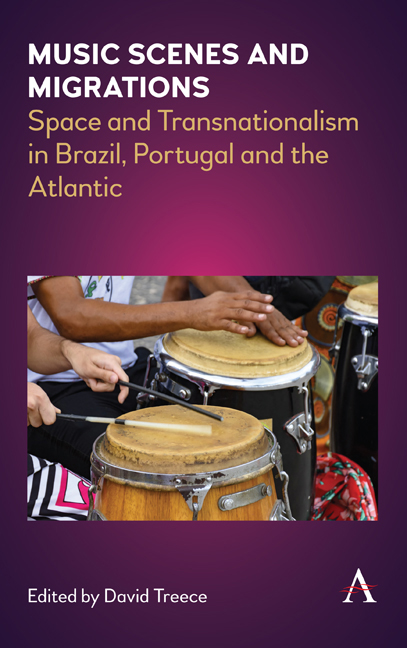Book contents
- Frontmatter
- Contents
- List of Illustrations
- Acknowledgements
- Introduction
- Part 1 Colonial and Postcolonial Transnationalisms, Migrations and Diasporas
- Part 2 Relocating Rio de Janeiro
- Part 3 Demetropolitanizing the Musical City: Other Scenes, Industries, Technologies
- Notes on Contributors
- Notes
- References
- Index
Chapter 10 - The National Arts Foundation and theMonumentalization of Rio de Janeiro’s Popular Musicas National Heritage
Published online by Cambridge University Press: 20 January 2022
- Frontmatter
- Contents
- List of Illustrations
- Acknowledgements
- Introduction
- Part 1 Colonial and Postcolonial Transnationalisms, Migrations and Diasporas
- Part 2 Relocating Rio de Janeiro
- Part 3 Demetropolitanizing the Musical City: Other Scenes, Industries, Technologies
- Notes on Contributors
- Notes
- References
- Index
Summary
The first symbolic constructions concerned with therepresentation of Brazilian national identityappeared in the realm of literature in themid-nineteenth century, during the Monarchy, andthey continued to evolve through the Republicanperiod, taking on evershifting configurations withina variety of artistic fields, until at least the1980s. The obsession with defining a Braziliannational identity, something that was always rootedin the discourse of miscegenation, was associatedwith the need to accommodate ethnic and socialtensions in compliance with the demands of distinctpolitical moments in the history of the nation. Inthe nineteenth century, the representation of apovo mestiço(mixed-raced people), based on a peculiarappropriation of racialist theories, argued that‘whitening’ should be the solution to the illsinherited from the ‘inferior races’, understood asblack and indigenous people. Authors such as SilvioRomero, in his História daLiteratura Brasileira (1888), combiningpositivism, determinism and evolutionism, were amongthe pioneers of this nationalist enterprise thatsought to bring Brazil into the family of Westernnations (Ventura 1991, 75). In the first half of thetwentieth century, Gilberto Freyre published Casa Grande e Senzala (TheMasters and the Slaves, 1933), whose optimisticnarrative of Brazilian inter-racial relationsmanaged to move beyond those nineteenth-centurynotions that had classified the country'sconstituent races and/or ethnicitieshierarchically.
In the field of music, the early twentieth century alsosaw the publication of Mário de Andrade's Ensaio da Música Brasileira(Essay on Brazilian Music, 1928). In his approach totheorizing the formation of the nation's modern artmusic, Andrade posited ‘the systematic use of folkmusic as a sine quanon of the artist's admittance into themusical republic’ (Wisnik 1982, 142). Andrade arguedthat the ‘essence of the Brazilian people’, itsautochthonous culture, was to be found in the ruralworld, consisting of the composite elements of thethree races that shaped the ‘national character’.Some years later, in A Música ea Canção Populares no Brasil (PopularMusic and Song in Brazil, 1936), Andradeextrapolated from Old World theorizations so as toacknowledge the existence of urban folklore assomething characteristic of younger nations.
- Type
- Chapter
- Information
- Music Scenes and MigrationsSpace and Transnationalism in Brazil, Portugal and the Atlantic, pp. 117 - 124Publisher: Anthem PressPrint publication year: 2020



